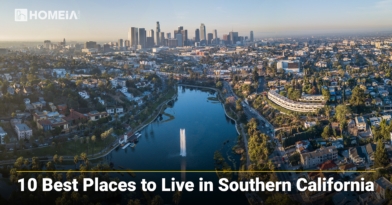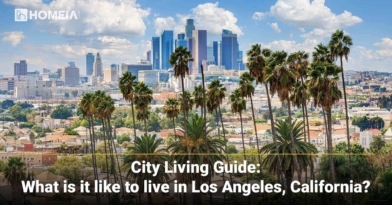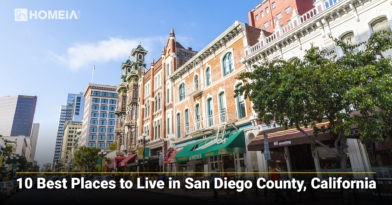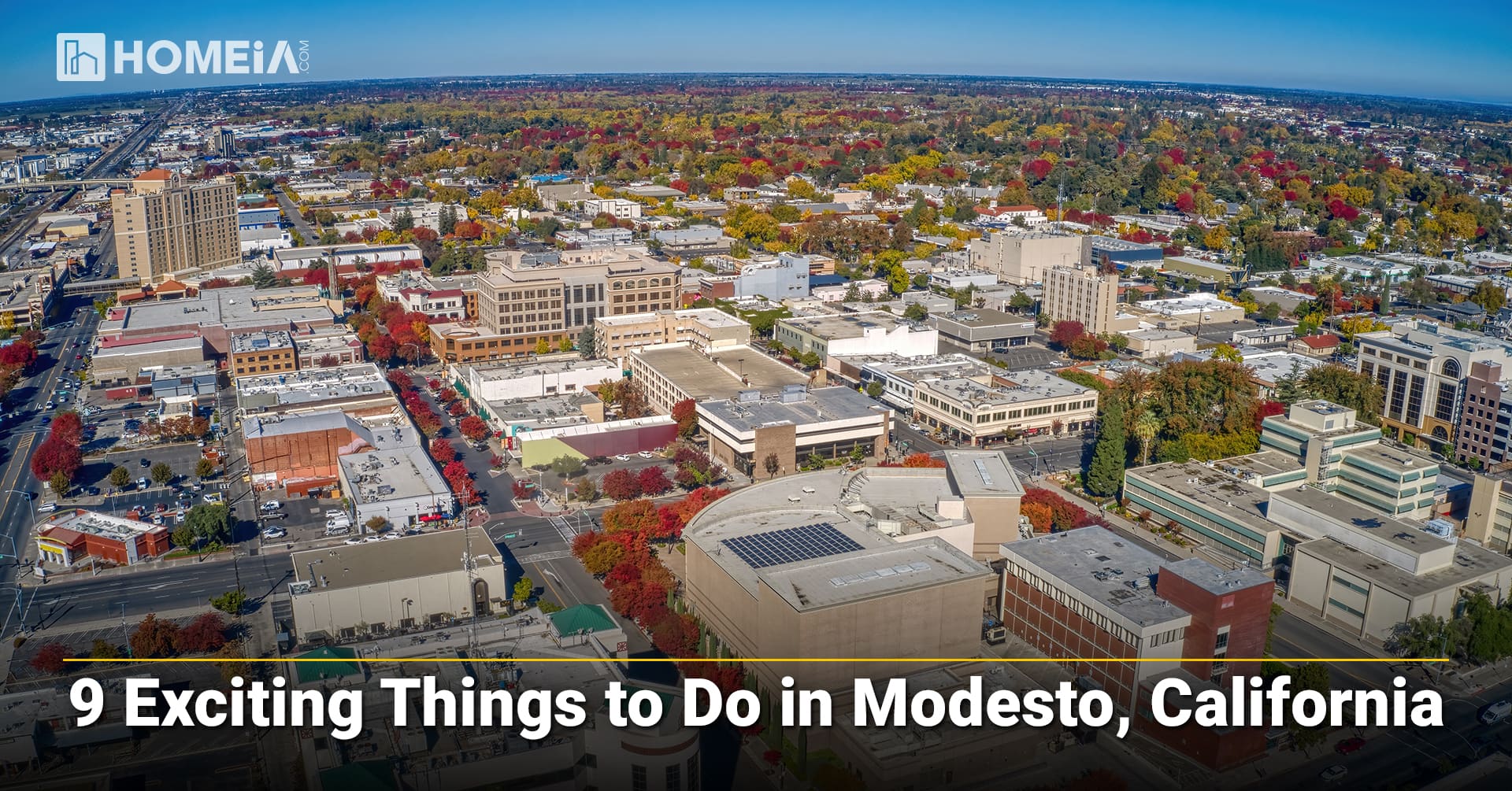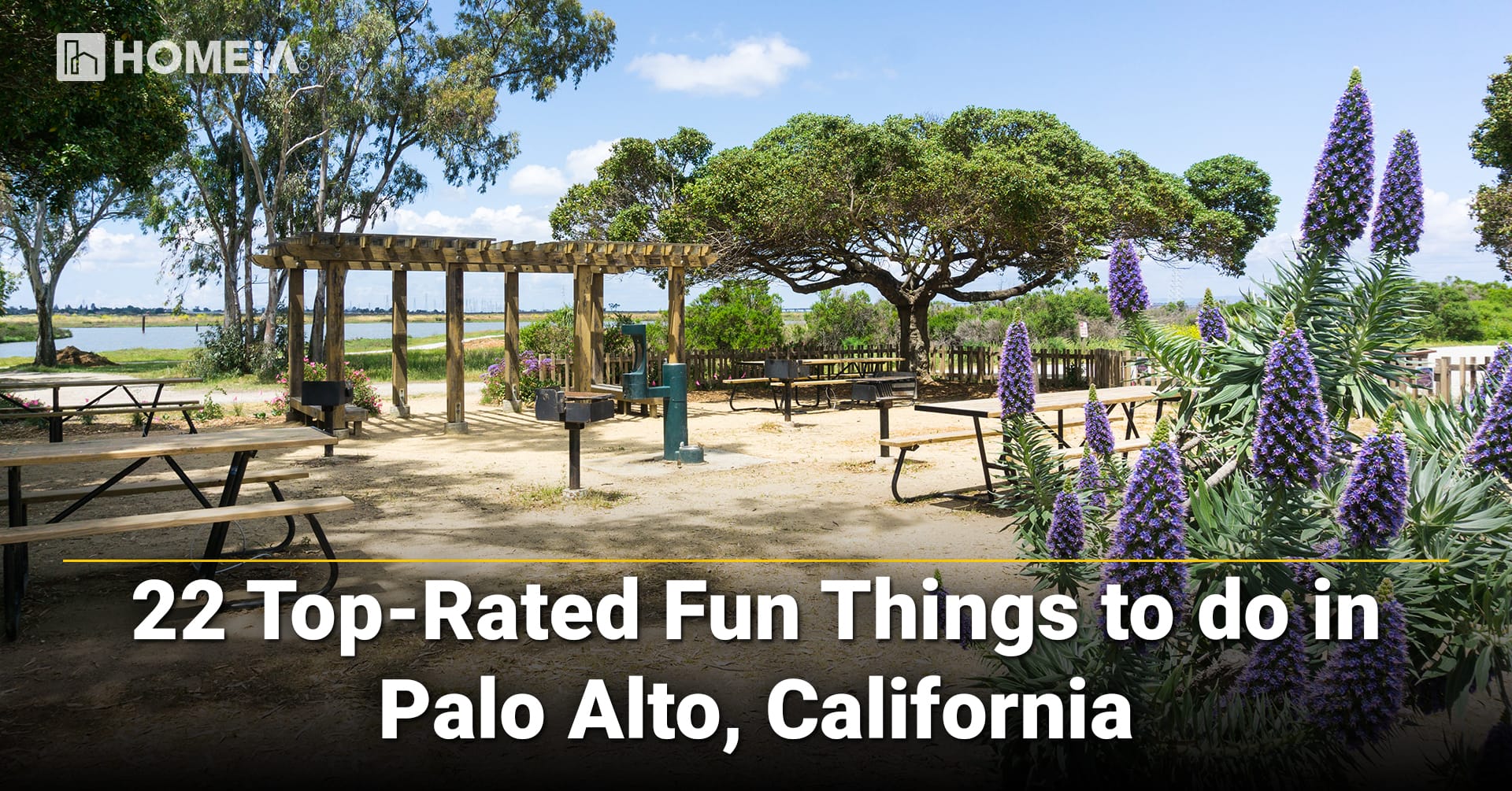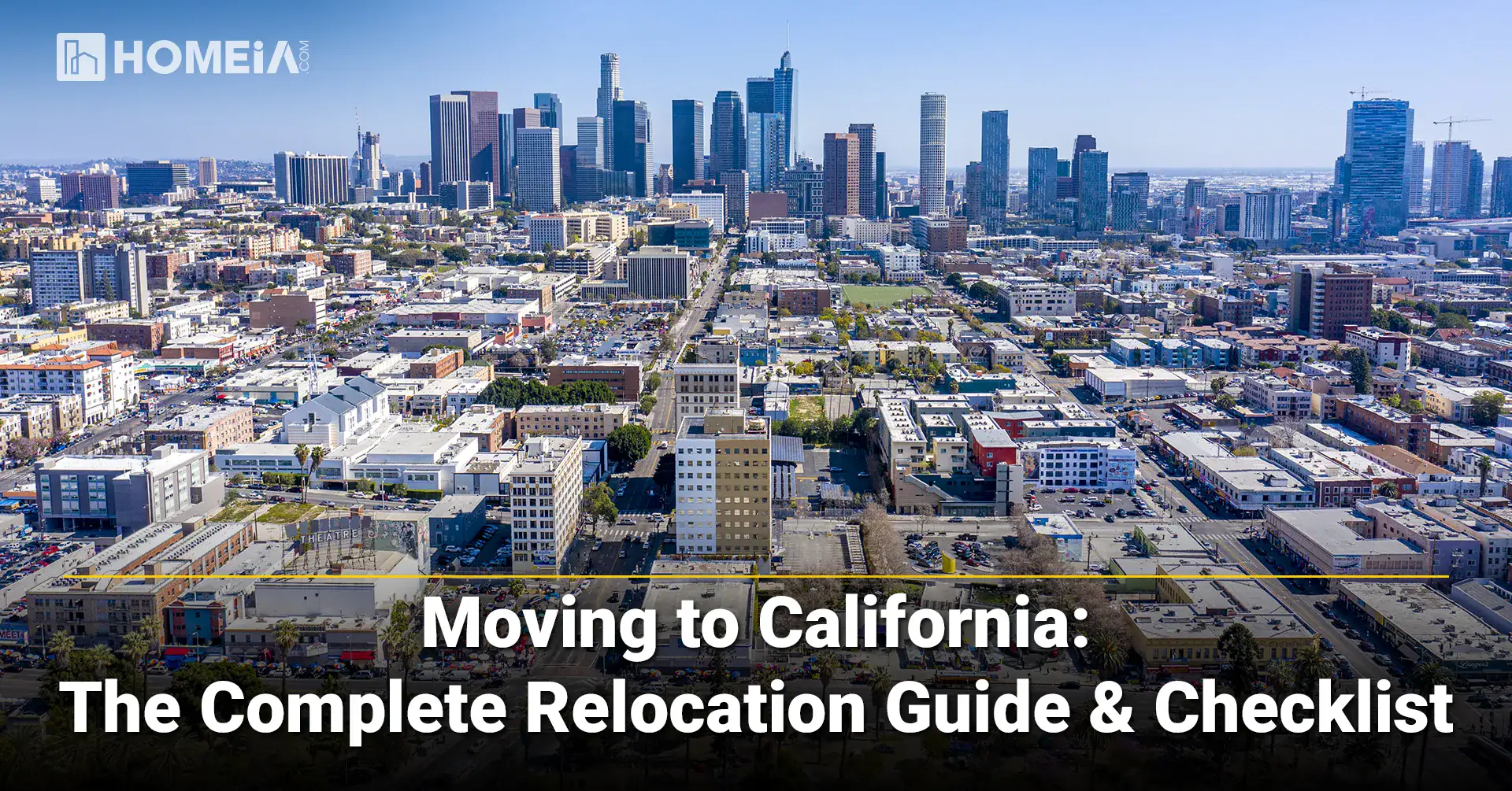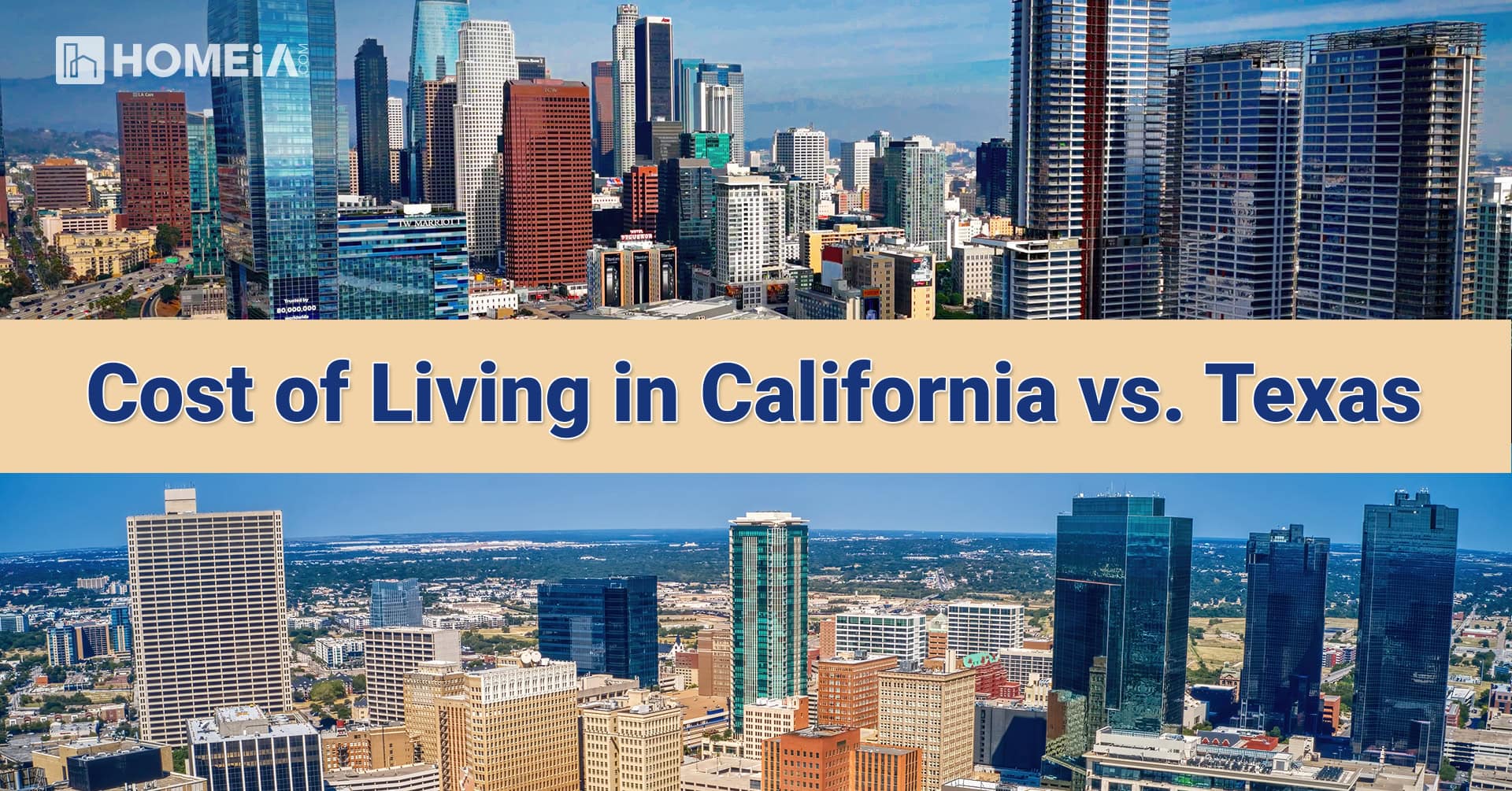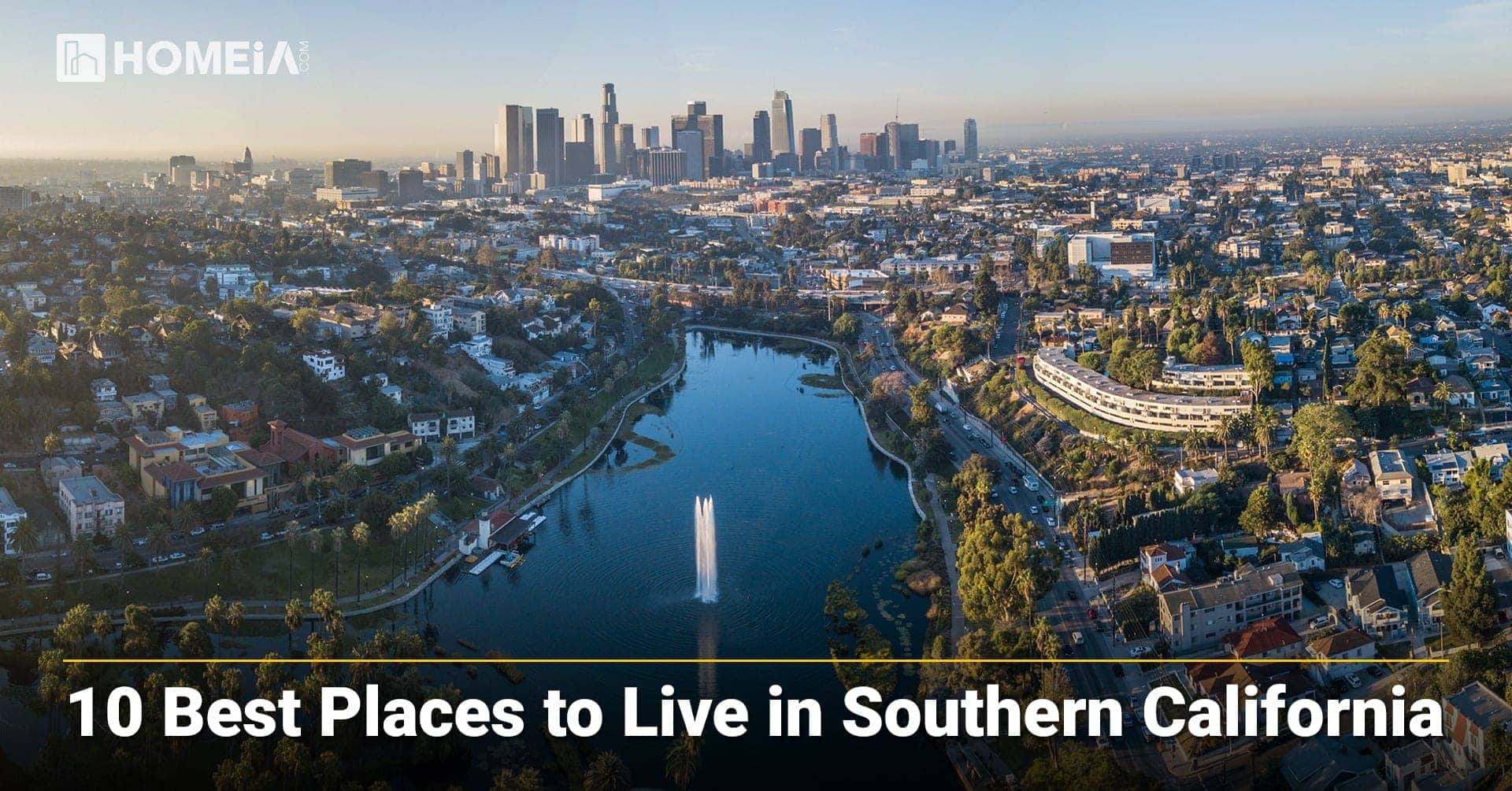Living in California
Local Editor(s)
Table of Contents:
- The Complete Guide to Cost of Living and Lifestyle
- 1. What housing really costs in California — and why
- 2. California state taxes: What you’re paying for
- 3. Daily living expenses in California add up
- 4. Raising a family in California: Education & childcare
- 5. California Transportation realities: Getting around the Golden State
- 6. California job market and income potential
- 7. Cost of living comparison: California vs. Texas vs. Florida
- 8. Pros & cons: California lifestyle in balance
- Cities with Low Cost of Living in California
- Frequently Asked Questions About Living in California
- Bonus: The State of California
- California’s Largest City
- California’s Benefits
The Complete Guide to Cost of Living and Lifestyle
California living means more than just stunning coastlines and towering redwoods. It’s a place to experience a vibrant blend of cultures, from the Cambodian community of Long Beach to Barrio Logan, San Diego’s Mexican-American artist hub.
The Golden State is also home to cutting-edge technological innovation, dazzling white mountaintops, and some of the world’s best surf spots—Mavericks, anyone?
While the prospect of moving to California is an exciting prospect, many transplants quickly discover that their dream lifestyle can come with a steep price tag. This comprehensive California cost of living guide breaks down the housing prices, taxes, daily expenses, and lifestyle trade-offs you’ll be confronted with if you decide to settle in the Golden State, so you can decide whether California’s rewards are worth the investment—and where you might find the best value.
The Pros and Cons of Living in California: Complete Relocation Guide 2025
In this article, we cover the Pros and Cons of living in California and explore the top cities for various demographic groups. We also provide plenty of insights to help you ease the relocation process and find your perfect destination in California…
1. What housing really costs in California — and why
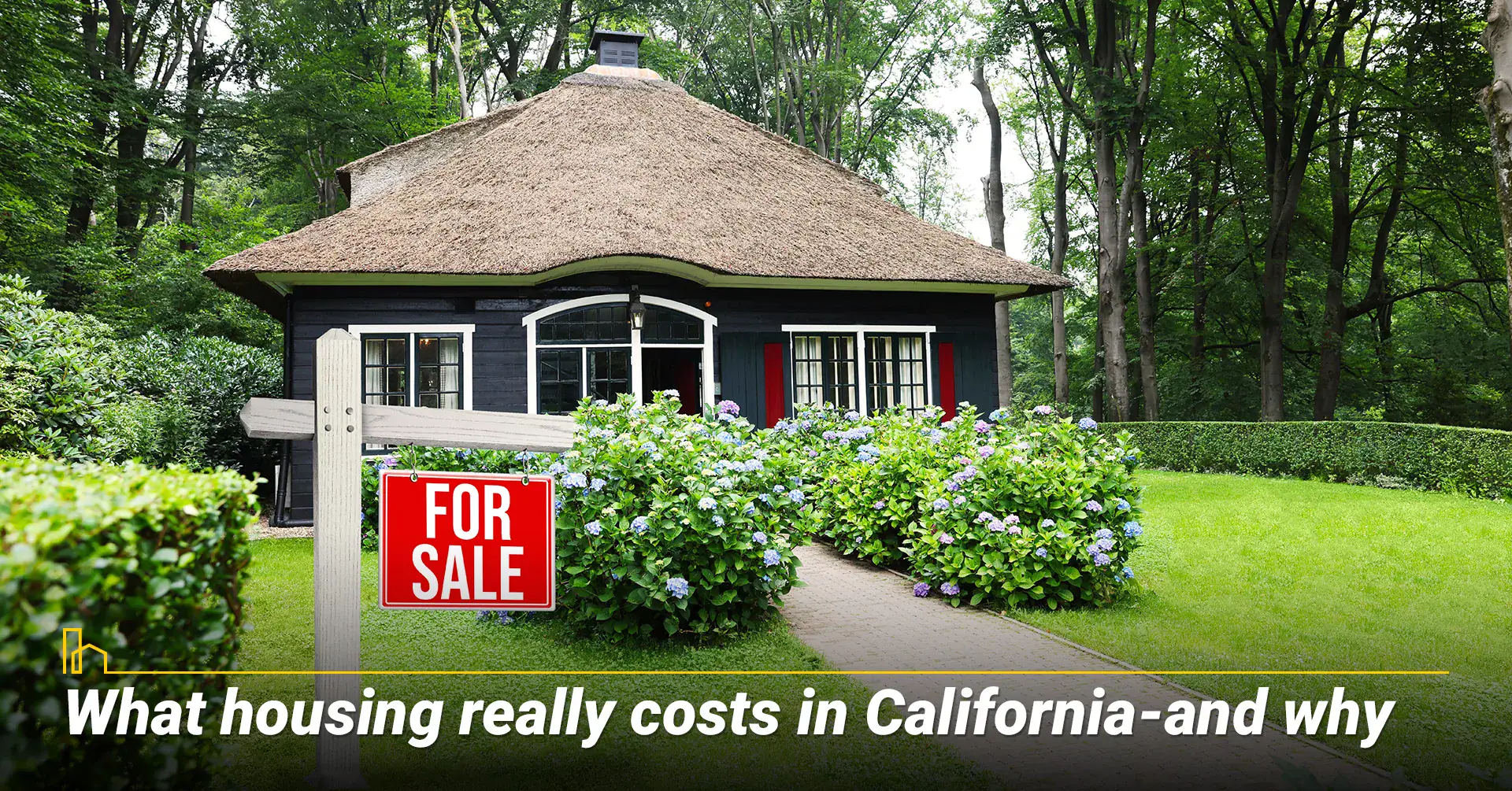
California’s real estate market has been among the nation’s most expensive since the early 1990s—and for good reason. Coastal demand remains sky-high, zoning and land use restrictions often limit new development, and many communities are still playing catch-up from decades of underbuilding.
But while prices in cities like San Francisco and Santa Barbara can feel out of reach, there are smart ways to approach the market so you can still enjoy the Golden State lifestyle.
A. Major California cities housing costs
City | Median Home Price | 2-Bedroom Rent | 3-Bedroom Rent |
|---|---|---|---|
| San Francisco | $1,300,000 | $3,850/month | $5,300-$7,000 |
| Los Angeles | $920,000 | $3,200/month | $4,950-$6,750 |
| San Diego | $910,000 | $3,150/month | $4,200-$10,000 |
| Sacramento | $510,000 | $2,200/month | $3,014-$4,242 |
| Bakersfield | $360,000 | $1,450/month | $2,025-$2,290 |
B. Smart ways to save on housing in California
One of the simplest starting points for managing the cost of living in California is to consider more affordable California cities like Sacramento or Bakersfield, where housing prices can be 40-50% lower than coastal areas.
If you’re interested in finding a smaller town to settle down, with a tight-knit community and plenty of surrounding woodlands to adventure through, then Northern California—north of San Francisco—might be for you.
You can find welcoming, up-to-date homes in bustling little towns like Eureka, Chico, and Redding range from $350,000–$450,000.
But if you’re still keen on moving to a more expensive city, exploring California’s suburbs can help you stretch your budget considerably. If you want access to San Diego at a lower price-point, for instance, try hunting for homes and apartments in the suburbs of Spring Valley and Escondido. You can be in downtown within 20–30 minutes outside of rush hour.
It’s worth noting that, due to rising vacancies in downtown areas of major California cities, some landlords are offering move-in incentives such as two months of rent-free living. For some, this might be enough to opt for renting nearer to a city’ central amenities and cultural highlights.
Moving to California: The Complete Relocation Guide & Checklist
This comprehensive guide helps you plan a successful move to California, covering cost of living, job market, moving timelines, and top cities like Silicon Valley, Los Angeles, San Diego, and Sacramento. Make informed decisions for your West Coast relocation with practical checklists and real insights for a smooth transition…
2. California state taxes: What you’re paying for
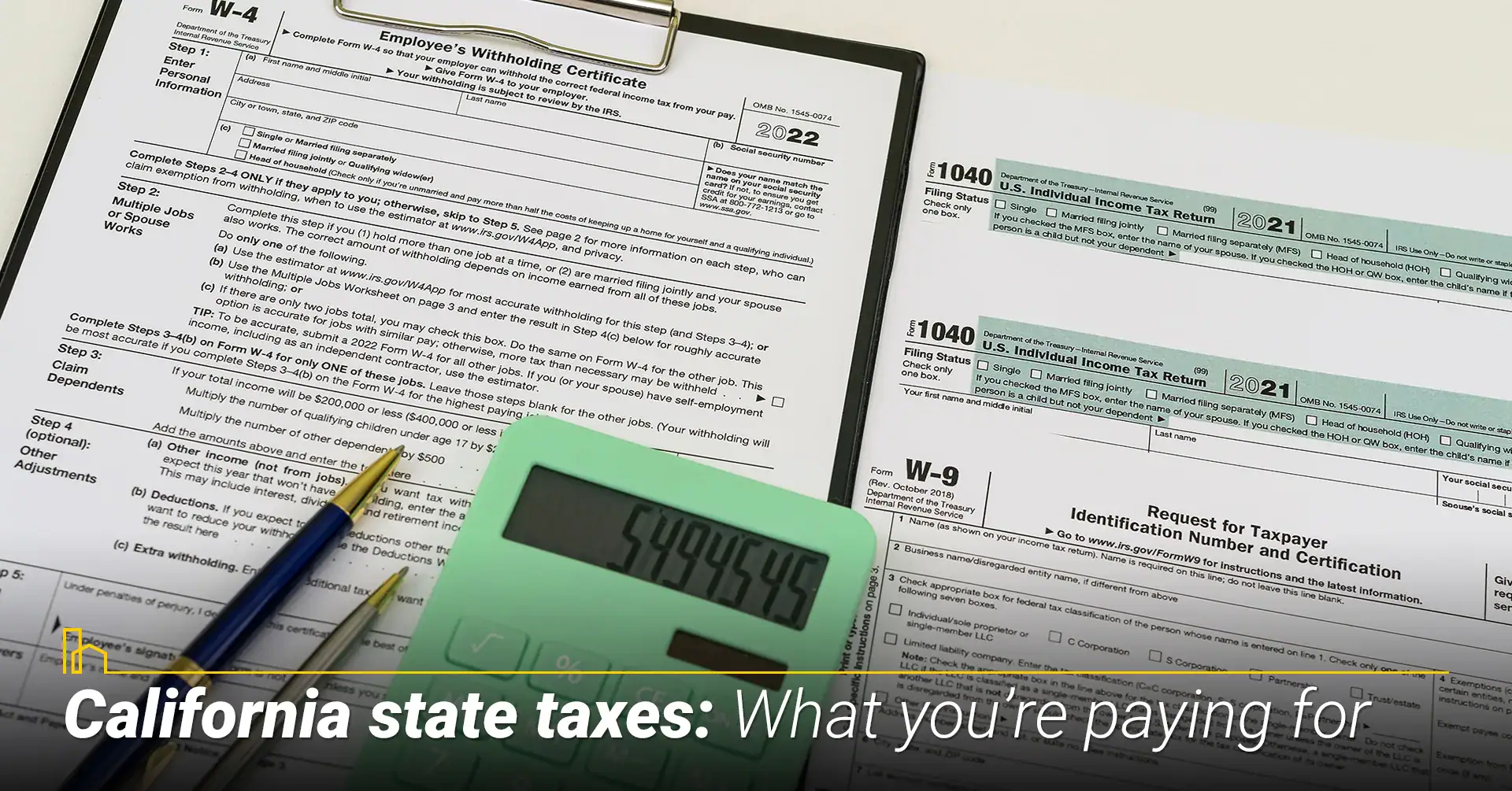
California’s taxes are among the highest in the country, helping fuel expansive public services like the Medi-Cal and CalWORKs programs, helping assist low-income individuals in need of child care assistance, mental health services, immunizations, and hospital care.
A large portion of state taxes also support an excellent system of public education systems like the community colleges California State University. And while this vast network of state services is impressive, the tradeoff is a direct hit to monthly household budgets.
A. How California’s high state taxes in daily life
California’s progressive income tax ranges from 1% to 13.3%—the highest in the U.S. Sales tax starts at 7.25% statewide but can top 10% when local rates are added. If you live in the City of Lancaster, for example, just an hour north of downtown Los Angeles, you’ll be staring down sales taxes of 11.25% each day.
California’s average 0.71% property tax rate may seem modest, but you need to keep in mind that it’s applied to some of the country’s most expensive real estate.
Gasoline in the Golden State also carries one of the nation’s highest tax burdens, partly a byproduct of environmental surcharges and cap-and-trade fees.
Yuba County, with an average retail gas price of $4.234/gallon, is one of California’s cheapest places to pump. On the other hand, if you’re filling up anywhere around the famous Mammoth Ski Area in Mono County, the typical gallon will run you $5.819.
B. Comparing state taxes: California vs. Texas vs. Florida
Tax Type | California | Texas | Florida |
|---|---|---|---|
| Income Tax | Up to 13.3% | 0% | 0% |
| Sales Tax Avg. | 8.82% | 8.20% | 7.01% |
| Property Tax | 0.71% | 1.60% | 0.80% |
10 Best Places to Live in Southern California in 2026
HOMEiA is here to help you explore ten of the best places to live in Southern California. Each place has its own charm and unique qualities. Let’s take a quick dive into what Southern California has to offer! Here’re 10 best places to live in Southern California…
3. Daily living expenses in California add up
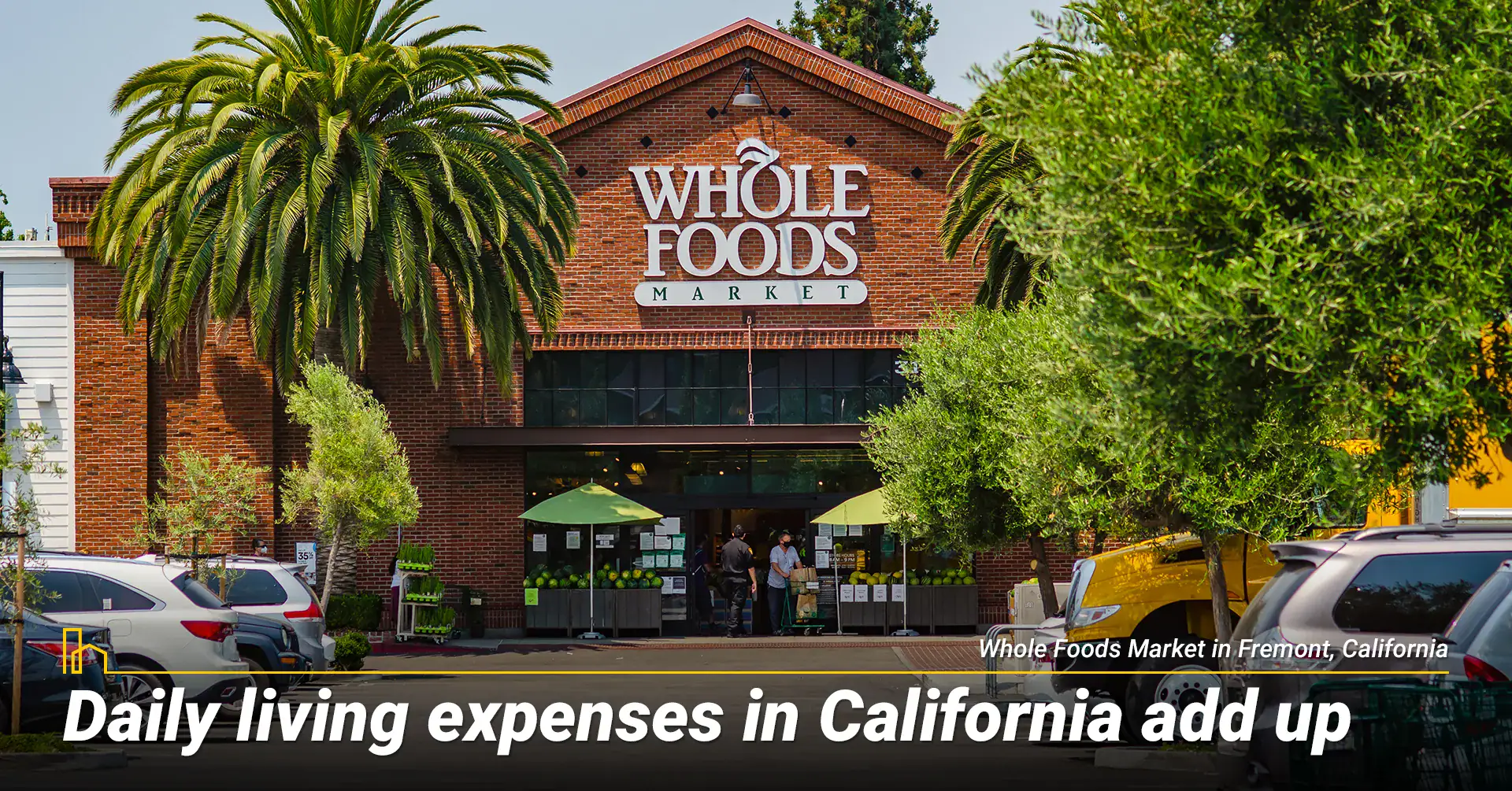
California living expenses sit around 15-25% above the national average,affecting everything from groceries to utilities. Weighing what you pay per month in California for necessities against the national average gives you a clear picture of how far your dollar stretches in the Golden State. If these figures freak you out at first, don’t worry, we’ve got some ways to save that can make a serious difference, too.
A. Monthly cost snapshot
Expense Category | California Cost | vs. National Average |
|---|---|---|
| Groceries | Varies by region | 15-20% higher |
| Utilities | $230/month average | Varies by region |
| Gasoline | $5.15/gallon | $1-$1.50 more per gallon |
| Healthcare | Varies by plan | 8-20% higher premiums |
B. Cost-cutting ideas that work
Expense Type | Money-Saving Strategy | Potential Savings |
|---|---|---|
| Groceries | Shop at Food4Less, FoodMaxx, Costco | 20-30% reduction |
| Utilities | Use energy efficiency programs | 15-25% lower bills |
| Transportation | Electric vehicles + incentives | $2,000-4,000/year |
| Healthcare | Covered California plans | 10-40% premium reduction |
10 Cheapest Places to Live in California
We assessed the cost of living across Californian cities and compared them to the national average. The cost of living is calculated based on 5 main categories: housing, food, healthcare, transportation and energy. Based on these calculations, we narrowed down the list to California’s 10 most affordable cities…
4. Raising a family in California: Education & childcare
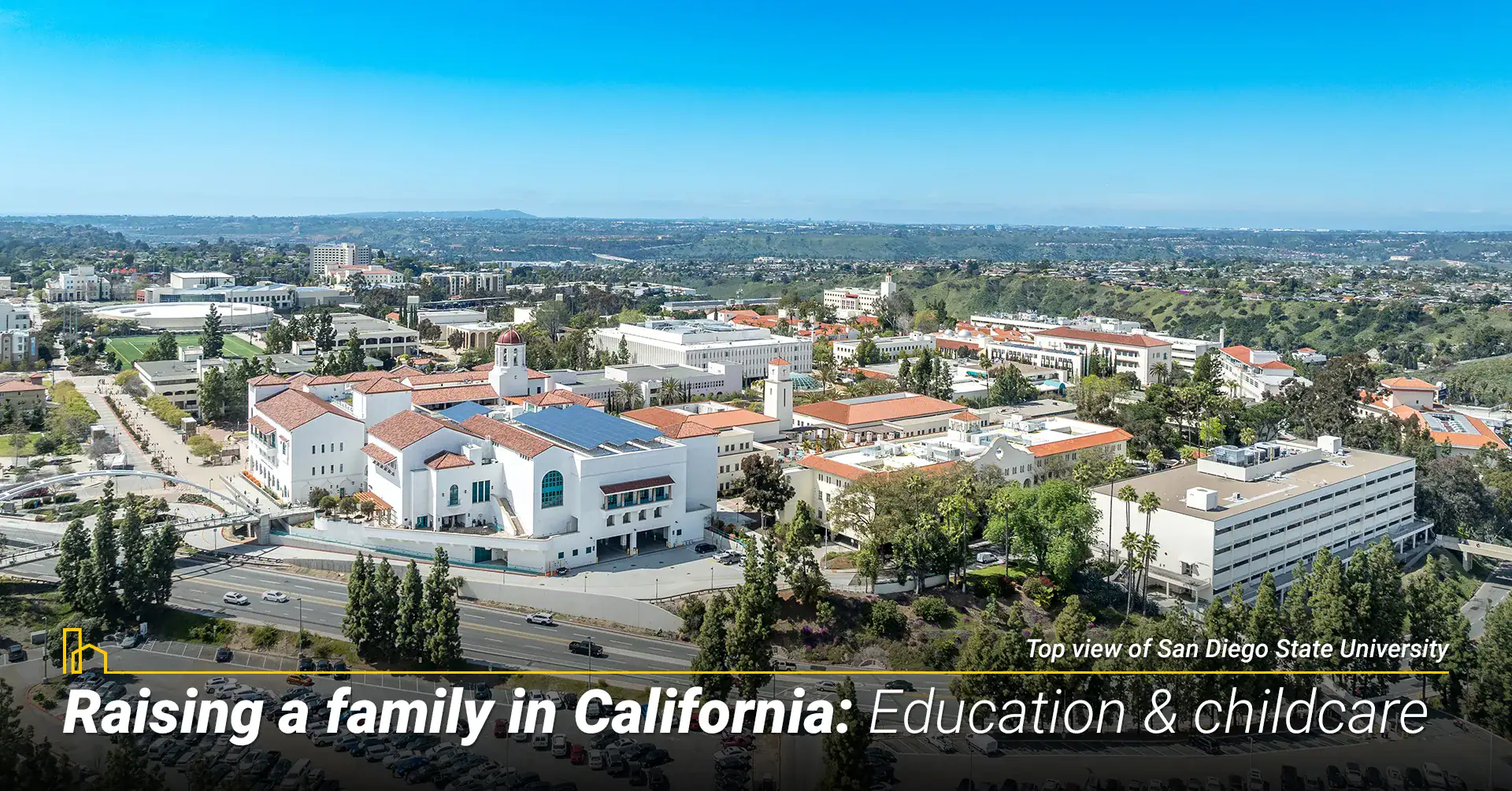
A lot of young families look to California as a good place to raise children. After all, some areas of the state have top-tier public schools, specialized educational opportunities, and some world-class universities.
The state is also ranked #7 in the nation for healthcare, and kids in California have plenty of opportunities to foster outdoor-focused lifestyles, whether they want to ski, surf, or become botany enthusiasts in the state’s vast forests.
But with every upside, there has to be some counterbalance waiting around the corner. For would-be Californians, it’s higher childcare and schooling expenses.
A. Education highlights in California
Top-rated school districts, including Palo Alto, Irvine, and San Ramon, consistently rank among the nation’s best. California maintains strong STEM and arts programs statewide with robust funding for innovative curricula.
The state also offers a range of public-school alternatives, with its extensive charter and magnet school options providing specialized education paths. Parts of the UC and CSU systems also offer consistently world-class higher education at relatively affordable in-state tuition rates. And for students who want to strive, huge names like Stanford, Harvey Mudd, and Pepperdine are within reach.
All that said, it’s key to note that the excellence of top-rated elementary schools like William Faria and Millikin in Cupertino partly reflect the affluence of their surrounding town. Cupertino is, after all, an expensive suburb of San Jose and San Francisco, known globally as the headquarters of Apple Inc.
If you’re searching for more affordable housing as you plan to plant roots in California, be aware that the state often ranks middle-of-the-road or below in terms of average educational standards when weighed against the national average.
Part of this has to do with the price tag of living in California. Although the state has high income taxes, of which a large portion goes to educational funding, operational costs are far higher and lead to fewer resources, especially in suburbs and rural communities.
B. Childcare considerations and costs
Childcare Type | Monthly Cost | Available Support |
|---|---|---|
| Daycare Centers | $1,200-$2,200 | State subsidies for qualifying families |
| Family Daycare | $800-$1,500 | Sliding fee scales available |
| Nannies/Au Pairs | $2,500-$4,000 | Employer FSA benefits |
| Universal Pre-K | Free (expanding) | Available in select districts |
Recommended for you
5. California Transportation realities: Getting around the Golden State

Whether you’re trying to (safely) maneuver your way through notorious LA traffic or hopping on BART in the Bay Area, transportation costs vary significantly between car-dependent areas and transit-rich cities throughout California.
A. Owning a car in California
Vehicle Cost | California Average | Additional Notes |
|---|---|---|
| Auto Insurance | $1,900/year | Up to $3,500 for young drivers |
| Gas Prices | Among nation’s highest | Due to environmental regulations |
| Registration Fees | Higher than most states | Annual renewal required |
| Parking (Urban) | $200-400/month | Major cities only |
B. Public transit options
Region | Transit System | Monthly Pass Cost | Coverage Area |
|---|---|---|---|
| San Francisco Bay | BART, Muni | $75-130 | Regional connectivity |
| Los Angeles | LA Metro, Metrolink | $75-130 | Expanding coverage |
| San Diego | MTS, NCTD | $72-108 | County-wide service |
| Sacramento | RT, SacRT | $65-95 | Metro area |
12 Key Factors to Know About Living in Los Angeles
If living in Los Angeles (or LA) is your reason for considering relocating to California, you will find a lot to love in this sunny, warm, sprawling, diverse city. In this article, we will give you a feel for L.A.’s standard of living, climate, housing, education and more. Below are top 12 key things to know about living in Los Angeles…
6. California job market and income potential

Although it’s glaringly obvious that California’s high cost of living has its drawbacks, the state does compensate for this in very tangible ways. California offers some of the U.S.’s most competitive salaries and is home to numerous fast-growing industries.
If you’re in tech, biotech, finance, or the entertainment industry, you’ll find a competitive-yet-rewarding job market that allows you to sustain your coastal dream life the state.
A. Income trends
Income Metric | California | National Average |
|---|---|---|
| Minimum Wage | $16.00/hour | $7.25/hour |
| Median Household Income | $91,500 | $75,000 |
| Top Industries | Tech, biotech, entertainment | Varies by state |
| Average Salary Growth | 4-6% annually | 3-4% annually |
B. High-demand career opportunities
Industry | Average Salary Range | Growth Outlook | Major Hubs |
|---|---|---|---|
| Software Engineering | $120,000-$250,000 | Excellent | Silicon Valley, SF, LA |
| Healthcare | $80,000-$200,000 | Strong | Statewide |
| Green Energy | $70,000-$150,000 | Rapidly Growing | Central Valley, Riverside |
| Entertainment | $60,000-$180,000 | Stable | Los Angeles, Burbank |
| Agricultural Tech | $65,000-$140,000 | Growing | Central Valley |
The 7 Best Cities to Live in California
For those looking at California as a potential home base, there are a variety of considerations to make when weighing a decision. Some may value safety and community, while others could not care less and just want to club all night. More factors like climate, recreation, and, certainly for most, proximity to the sea will be major considerations…
7. Cost of living comparison: California vs. Texas vs. Florida
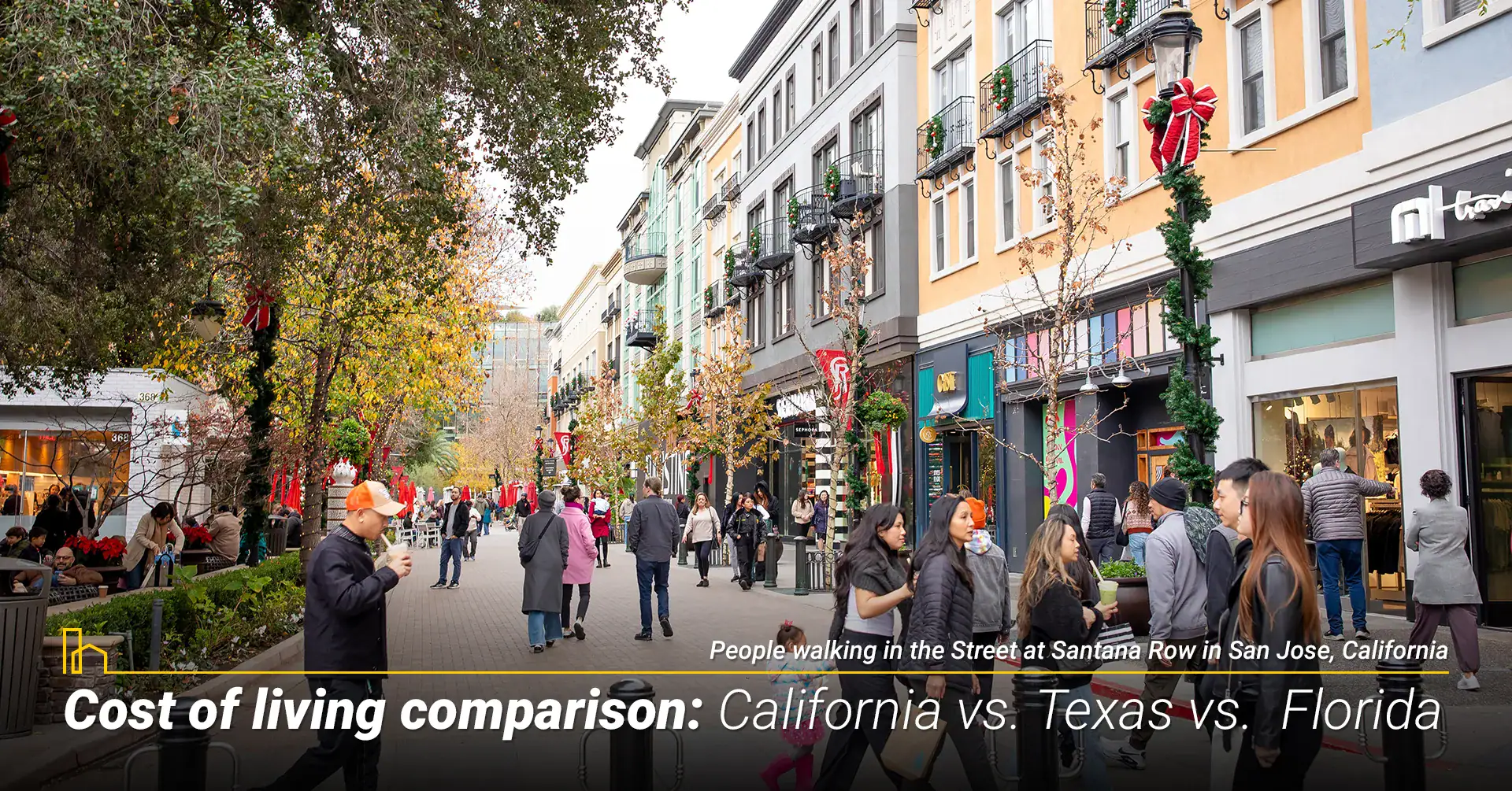
Before you pack your bags and head for the California coast, it’s important to take time to consider other popular relocation states in the U.S. and see how it stacks up. When compared to lower-cost transplant states like Texas and Florida, it’s clear that California’s housing and fuel prices continue to make it the priciest of the bunch.
Expense Category | California | Texas | Florida |
|---|---|---|---|
| Median Home Price | $743,000 | $345,000 | $390,000 |
| Average Rent (2BR) | $2,800 | $1,400 | $1,600 |
| Gas Price/Gallon | $5.15 | $3.45 | $3.60 |
| Commute Time | 30-40 min | 25-30 min | 24-28 min |
8. Pros & cons: California lifestyle in balance
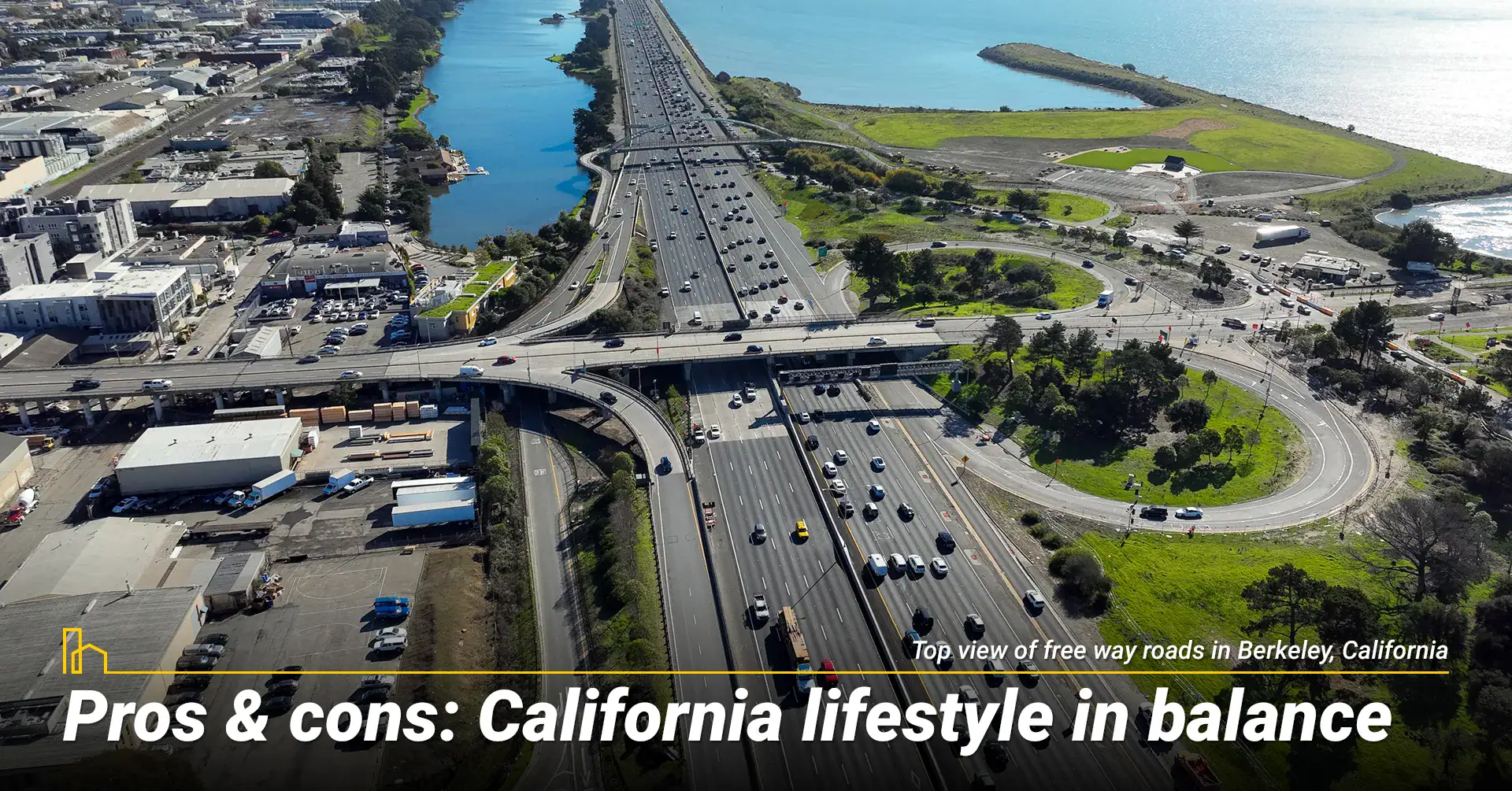
Any lifelong resident or newcomer to California can tell you that the lifestyle lives up to the year-round recreation and cultural diversity hype you’ve heard of, but these benefits come with important growing pains.
It’s not all sunshine and idyllic beachfronts: the state has one of the largest income inequality problems in the nation, not to mention ongoing natural disaster risks like hard-to-contain wildfires and annual moderate earthquakes.
A. Lifestyle Advantages of California Living
- Mediterranean climate with year-round outdoor access
- Diverse population and globally ranked cuisine and entertainment
- Forward-thinking environmental and clean-energy initiatives
- National/state parks across deserts, forests, mountains, and coastline
B. Challenges to Consider Before Moving
- Wildfire season (June–November) affects air quality and travel
- Earthquake preparedness is essential and can increase costs
- Traffic congestion in major cities remains frustrating
- Homelessness and income inequality are prominent in urban areas
- Periodic droughts lead to water-use restrictions
Recommended for you
Cities with Low Cost of Living in California
California is a world-famous destination, filled with iconic coastlines, warm beaches, and dense old old-growth forests—but for many, Golden State dreams still carry a golden price tag. With its global reputation for sky-high real estate and living costs, finding an affordable Californian city can feel like chasing an elusive mirage in a desert. But not all hope is lost—many areas of California remain in reach of reasonable budgets.
This guide highlights 10 cities with lower-than-average costs, evaluated through a HOMEiA-style scoring framework. Each city’s score is composed of multiple factors: cost-of-living indices (compared to both California and national averages), home-price-to-income ratios, rental affordability, local job markets, and community livability.
This isn’t just about cheap housing—it’s about balance. You’ll discover places like Clearlake, where homes with a typical price of $217,000 are priced well under U.S. norms; Fresno and Stockton, where sub-$400K homes and rich cultural communities stand in stark contrast to Bay Area balloon prices. Plus, inland hubs like Bakersfield and Clovis offer reliable jobs in agriculture and industry amid reasonable living costs.
Ready to find a city that fits your budget and lifestyle? Let’s dive in.
Methodology: How We Chose These Cities
To identify California cities with genuinely affordable living costs, we applied a modified version of the HOMEiA Score. This ranking system considers:
- Cost of Living Index (COLI) vs. national average (U.S. avg. = 100)
- Median Home Price relative to local income
- Rental Affordability
- Local Job Market
- Amenities and Quality of Life
Each city receives a score out of 100 based on these factors, using data from Zillow, Redfin, the U.S. Census Bureau, Best Places, and local economic reports.
9 Exciting Things to Do in Modesto, California
We’ll explore some of the best outdoor activities that Modesto offers, highlighting some of the city’s hidden gems and must-see attractions. Whether you’re a local or a visitor, you won’t want to miss the chance to experience the beauty and adventure of Modesto’s great outdoors…
Summary of Top 10 Affordable California Cities
Rank | City | Population | Median Home Price | Cost of Living Index | HOMEiA Score | Key Advantage |
|---|---|---|---|---|---|---|
| 1 | Clearlake | 15,120 | $217,000 | 89 | 85/100 | Lowest housing costs |
| 2 | Fresno | 545,567 | $380,000 | 101 | 82/100 | Big city amenities |
| 3 | Bakersfield | 384,145 | $410,000 | 95 | 79/100 | Energy sector jobs |
| 4 | Stockton | 314,937 | $465,000 | 108 | 78/100 | Leading job growth |
| 5 | Sacramento | 525,041 | $550,000 | 113 | 77/100 | State capital benefits |
| 6 | Chico | 101,475 | $485,000 | 105 | 75/100 | College town charm |
| 7 | San Jacinto | 53,898 | $485,000 | 93 | 74/100 | Inland Empire access |
| 8 | Clovis | 127,760 | $524,000 | 103 | 73/100 | Excellent schools |
| 9 | Fontana | 208,393 | $665,000 | 116 | 72/100 | Highest incomes |
| 10 | Eureka | 26,512 | $450,000 | 97 | 71/100 | Coastal living |
1. Clearlake, CA
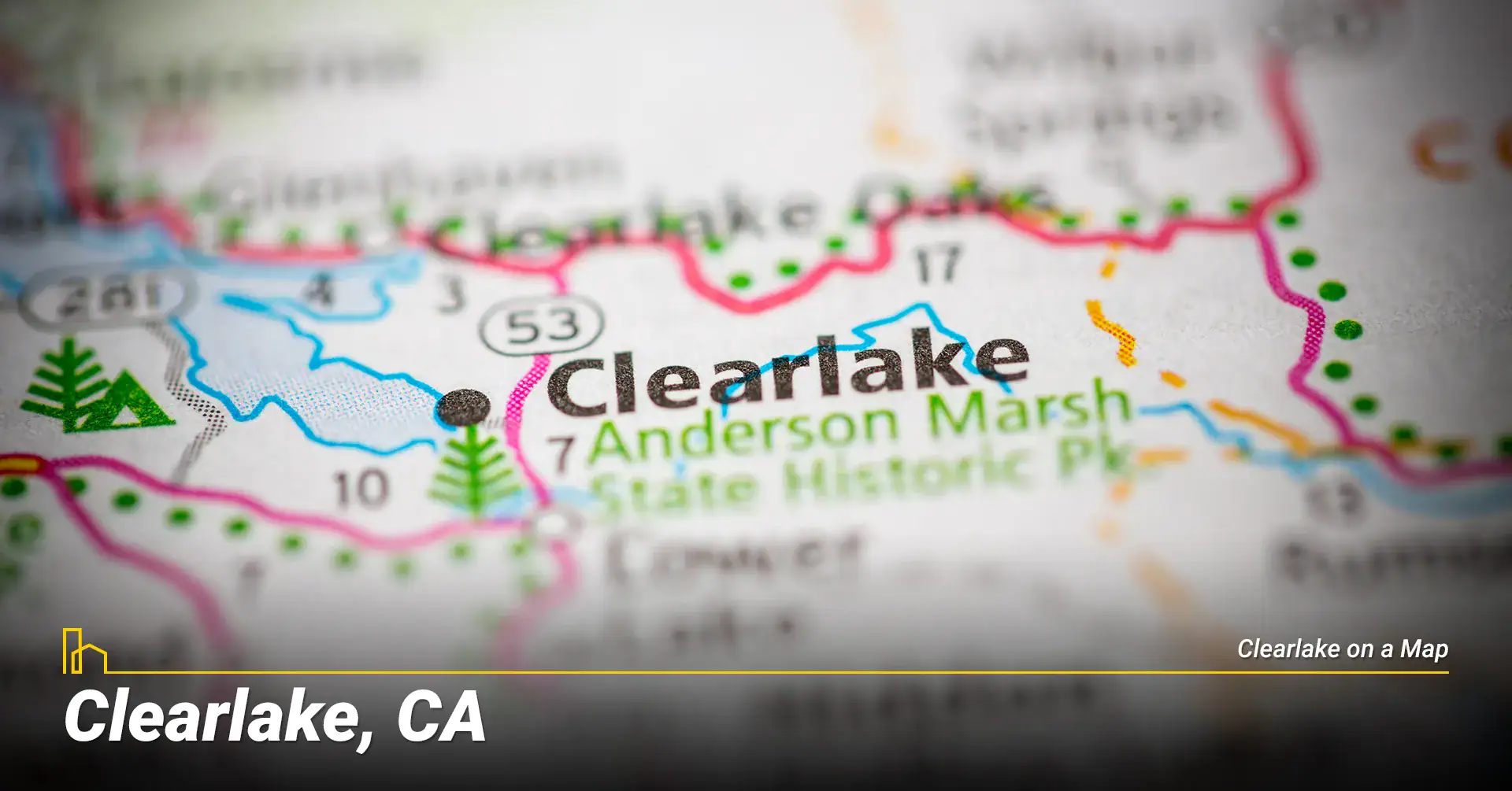
HOMEiA Score: 85/100
- Monthly Rent: $1,500
- Population: ~15,120
- Median Home Price: $217,000
- Cost of Living Index: 89
- Region: Northern California (Lake County)
Why It’s Affordable: Clearlake offers California’s lowest housing costs due to its rural location and limited job market. With median home prices sitting at about one-third of the state median. The lack of major employers keeps demand low, while Proposition 13 caps property tax at 1% of the assessed value, providing long-term savings for homeowners. Remote workers and retirees are increasingly drawn to Clearlake by USDA rural development loans that require no down payment—at least if the borrower cannot qualify for a conventional mortgage.
Pros: Living in Clearlake means access to California’s largest natural freshwater lake (a surface area of 68 square miles!), with abundant fishing and boating opportunities. The slow pace of life appeals to those seeking escape from urban congestion, and the recent downtown revitalization has added new lakeside dining options. Unlike many California communities, Clearlake has no local sales tax add-ons (it sits at 8.75%), and the cost of basic services like trash collection runs 20% below state averages. The larger 32-gallon cart costs $19.99 per month, while a smaller, 20-gallon cart will only run you $16.85 per month.
Cons: That said, anyone considering the city should be aware that the area’s affordability comes with significant compromises. CalFire designates 85% of Lake County as high wildfire risk, requiring expensive insurance premiums and emergency preparedness. Full healthcare access is limited to Adventist Health, with the next nearest full-service hospital being an hour away in Ukiah. Some portions of Clearlake may lack reliable broadband internet, though AT&T and Verizon cover about 80% of the city. Faulty broadband, however, forces some residents to use satellite internet. The city’s population has shrunk approximately 2% since 2020, which has led to reduced public services, including more limited public transportation and potential school closures.
The Process of Furnace installations in the San Jose, California
This article details the process of furnace installations in the San Jose microclimate, including how to find the best furnace installer, factors to consider if you want to DIY your furnace installation, and the indicators that let you know that your furnace needs replacing…
2. Fresno, CA
HOMEiA Score: 82/100
- Monthly Rent: $1,650
- Population: ~545,567
- Median Home Price: $380,000
- Cost of Living Index: 101
- Region: Central Valley
Why It’s Affordable: Fresno’s Central Valley location and agricultural economy keep housing prices nearly 50% below coastal cities. The $380,000 median home price reflects increased inventory from new developments in neighborhoods like Fig Garden. California’s housing policies incentivize affordable construction here, with several mixed-income projects receiving state funding in 2023. The abundant local produce also helps lower grocery bills to about 12% below state averages. In fact, there are 6 or 7 farmers’ markets in the greater Fresno area currently operating!
Pros: As the gateway to Yosemite, Fresno offers unparalleled access to outdoor recreation just an hour and 15 minutes away. The city boasts a thriving arts scene in the historic Tower District and a growing food culture centered around farm-to-table restaurants. Community Regional Medical Center has become an economic engine, adding hundreds of healthcare jobs last year. Fresno State University brings cultural and educational opportunities uncommon in cities of similar affordability.
Cons: According to the American Lung Association, Fresno ranks fourth worst nationally for ozone pollution, requiring many residents to invest in air purifiers. Summer temperatures routinely exceed 100°F, driving average cooling costs to $350/month. Certain neighborhoods struggle with property crime rates 25% above state averages, though the downtown area has seen significant safety improvements in recent years.
7 Cheapest Places to Live in Southern California
Looking for the cheapest places to live in Southern California? This guide highlights seven cities near Los Angeles that offer affordable housing, low living costs, and great amenities. Whether you’re a first-time buyer, retiree, or remote worker, these budget-friendly communities provide quality of life without the typical SoCal price tag…
3. Bakersfield, CA
HOMEiA Score: 79/100
- Monthly Rent: $1,556
- Population: ~384,145
- Median Home Price: $410,000
- Cost of Living Index: 95
- Region: Central Valley
Why It’s Affordable: Bakersfield’s energy sector creates boom-and-bust cycles that moderate housing costs, with current median prices at $410,000, almost have the Golden State’s median home price. Part of the reason is that the city enjoys the benefits from California’s Central Valley housing initiatives while avoiding the extreme demand spikes of coastal markets. Local oil companies often provide relocation assistance, including down payment help for skilled workers. Agricultural subsidies help keep grocery costs low, especially for seasonal produce.
Pros: The energy sector offers high wages, with oilfield jobs averaging $80,000 annually. Bakersfield’s country music heritage lives on at venues like Buck Owens’ Crystal Palace, while interesting businesses like Jerry’s Pizza & Pub combine classic pizza kitchens with rock venues. A recent downtown renaissance has added breweries and cultural spaces, while the Kern River Parkway provides 30 miles of trails. Amtrak’s San Joaquin line allows anyone in Bakersfield to affordably travel to Los Angeles in under three hours, skipping coastal gas prices and traffic jams.
Cons: Because Bakersfield sits in the Central Valley, the surrounding mountains tend to trap pollution and emissions from the agricultural and oil industries, wildfires, and highway traffic. This is a major contributor to why the city has repeatedly been ranked among the nation’s worst for particulate pollution, which can exacerbate respiratory conditions. The car-dependent layout scores just 37 on Walk Score’s index, with minimal public transit options and few bike lanes. Economic stability fluctuates with oil prices, and the 9% unemployment rate masks significant underemployment. Summer temperatures regularly hit 105°F, and the limited tree canopy means you’re left wide open to sizzling heat.
22 Top-Rated Things to Do in Palo Alto, California
While San Francisco is the first city people think of whenever California‘s Bay Area is mentioned, several other cities make sizable contributions to the region. One of these is Palo Alto, a mid-sized city of 66,649. Palo Alto was founded in 1894 by Leland Stanford, an American naturalist who founded the esteemed Stanford University…
4. Stockton, CA
HOMEiA Score: 78/100
- Monthly Rent: $1,286
- Population: ~314,937
- Median Home Price: $465,000
- Cost of Living Index: 108
- Region: Central Valley/North
Why It’s Affordable: Stockton offers one of California’s most surprising comeback stories, with median home prices around $465,000 making it a viable option for Bay Area commuters. The city’s affordability comes from its Central Valley location and growing logistics sector, where massive distribution centers near the Port of Stockton are creating thousands of jobs. First-time buyers should check out the city’s down payment assistance programs offering up to $20,000 in assistance through city and state-backed programs for eligible first-time buyers.
Pros: The revitalized downtown along the Stockton Deep Water Channel has transformed into a lively destination with new restaurants and entertainment venues. You’ll get easy access to the Delta’s waterways for boating and fishing, plus Amtrak’s San Joaquin line connects directly to the East Bay in around 2 hours, with connections to San Francisco via BART or bus. The city’s diversity creates an incredible food scene—don’t miss the authentic Vietnamese pho shops that rival anything in San Jose.
Cons: Stockton still carries some baggage from its bankruptcy era, with certain neighborhoods continuing to struggle with higher crime rates. Particularly hairy neighborhoods surround Louis Park, Bianchi, Fox Creek, and Kelly Drive. Summers get brutally hot, with temperatures regularly hitting 105°F and poorer air quality that might bother those with respiratory issues. While the job market is improving, wages still lag behind the Bay Area, so commuting might remain necessary for some professions.
The 10 Best Places to Live in San Diego, California (2025)
For a more family-oriented environment, Carmel Valley’s excellent schools and parks stood out. Each area in San Diego has its unique appeal, making it easy to find the perfect place to call home…
5. Sacramento, CA
HOMEiA Score: 77/100
- Monthly Rent: $1,921
- Population: ~525,041
- Median Home Price: $550,000
- Cost of Living Index: 113
- Region: Northern Central Valley
Why It’s Affordable: Sacramento hits that sweet spot where you get capital city amenities without Bay Area prices, with median homes around $550,000. The stable government job market (nearly 1 in 5 workers) helps keep the economy balanced, while new housing developments near light rail stations offer affordable options through city programs. You’ll find charming Craftsman bungalows in Midtown at prices that would be unthinkable in similar neighborhoods down south.
Pros: The farm-to-fork movement thrives here—you can shop at one of California’s largest certified farmers’ markets one day and dine at innovative farm-to-table restaurants the next. Outdoor lovers will adore the 32-mile American River Parkway, perfect for cycling or rafting right through the city. Sacramento’s tree-lined streets and historic architecture give it a character that newer California cities often lack.
Cons: The homeless crisis has become increasingly visible, especially near the American River Parkway and downtown areas. Summer turns the city into an oven, with weeks of 100°F+ temperatures that make air conditioning essential. While light rail exists, SacRT’s light rail modernization project will cause intermittent disruptions through late 2025, making commuting more challenging.
10 Most Affordable Places to Live in California: 2025
California, known as the Golden State, is as famous for its natural beauty and geographic diversity as it is for making people’s Hollywood dreams come true. What many house hunters don’t realize is you can live well in California without having to spend all your time working to balance your budget…
6. Chico, CA
HOMEiA Score: 75/100
- Monthly Rent: $1,589
- Population: ~101,475
- Median Home Price: $485,000
- Cost of Living Index: 105
- Region: Northern California
Why It’s Affordable: Chico offers that perfect blend of college town energy and outdoor access to the Mendocino National Forest. The presence of CSU Chico keeps the rental market strong while maintaining reasonable purchase prices compared to similar Northern California towns. Recent state grants for wildfire hardening can help offset some costs for homeowners willing to make safety upgrades.
Pros: Bidwell Park is the crown jewel—3,600 acres of wilderness right in town where you can hike, swim, or bike without ever getting in your car. The university brings cultural perks like art exhibits and theater productions you wouldn’t expect in a city this size. Downtown’s walkable grid is packed with local breweries, bookstores, and the Saturday farmers’ market that’s been running since the 1970s.
Cons: Wildfire risk looms large here – CalFire’s latest maps show expanding high-risk zones surrounding the city. The Camp Fire’s aftermath continues to affect housing availability, with rental vacancy rates hovering below 3%, due in part to rebuilding constraints and population shifts post-Camp Fire. Healthcare options are limited for anything beyond basic needs, requiring trips to Sacramento for many specialists.
8 Key Steps to Buy a Manufactured Home in California
If you’re among the growing number of people looking to buy a mobile home in California, there are a few steps to take: Talk to owners of mobile homes, consider your priorities, learn about local laws and regulations, locate dealerships and sellers, explore available manufacturers, and consider local conditions. Then you can finance and insure your home and sign a contract…
7. San Jacinto, CA

HOMEiA Score: 74/100
- Monthly Rent: $2,350
- Population: ~53,898
- Median Home Price: $485,000
- Cost of Living Index: 93
- Region: Inland Empire (Riverside County)
Why It’s Affordable: San Jacinto gives you Southern California living at prices that won’t break the bank, with median home prices fluctuating between $400,000 and $500,000—significantly cheaper than nearby Temecula. The city’s location in Riverside County’s more affordable corridor means you can enjoy mountain views without the premium price tag. New developments like Mountain View offer modern, energy-efficient homes starting in the mid-$400s, and Riverside County’s first-time homebuyer programs can knock down your interest rate by up to 3 to 4%.
Pros: You’re just 15 minutes from Mt. San Jacinto State Park, where hiking trails and winter snow play await. The Soboba Casino Resort provides entertainment and job opportunities close to home. Recent additions like the Esplanade shopping center mean you don’t always have to drive to Hemet for everyday needs. Families appreciate STEM-focused magnet programs, though overall school ratings vary by neighborhood.
Cons: Summer temperatures regularly hit 98°F with little nighttime relief, making AC bills a significant expense. The job market leans heavily toward service industry positions, with wages averaging 18% below county norms. Public transportation is practically nonexistent, so owning a car is mandatory. While housing is more affordable than neighboring cities, prices have jumped over 40% in recent years.
The Cost of Living in California vs Texas (Updated)
Both California and Texas have not only the largest populations but the largest habitable landmass of any of the U.S. states. This means there are not a lot of statements that can be made which represent either state in totality. We’ll let you know here the general cost factors to consider when making a decision to relocate to either state…
8. Clovis, CA

HOMEiA Score: 73/100
- Monthly Rent: $1,716
- Population: ~127,760
- Median Home Price: $524,000
- Cost of Living Index: 103
- Region: Fresno County
Why It’s Affordable: Clovis maintains reasonable prices through careful growth management and its agricultural roots. The county’s commitment to preserving surrounding farmland through Williamson Act contracts helps stabilize property taxes. You’ll find well-built family homes here at prices that would be unheard of in comparable school districts closer to the coast.
Pros: The school system is the real draw—Clovis Unified consistently ranks among California’s best, spending $12,800 per student compared to the $11,300 state average. Old Town’s revitalization brought charming boutiques and eateries to the historic center. Outdoor enthusiasts love being Located within two hours of three national parks: Yosemite, Kings Canyon, and Sequoia. The tight-knit community hosts fantastic events like the weekly farmers’ market and annual rodeo.
Cons: You’ll share Fresno’s air quality challenges, with over 35 unhealthy air days annually. The conservative-leaning community also lacks the cultural diversity of neighboring Fresno. Summer heat regularly exceeds 100°F, and water restrictions have become the norm during drought years. Limited nightlife means you’ll often head to Fresno for entertainment.
What You Should Know to Get Your Commercial Business ADA-Compliant in California
ADA compliance is obligatory. In this article, we will discuss how a Certified Access Specialist (CASp) can assist you in making your business ADA-compliant in the state of California. If you are a small business owner, you may be wondering if it’s worth the extra effort to bring your business into compliance…
9. Fontana, CA
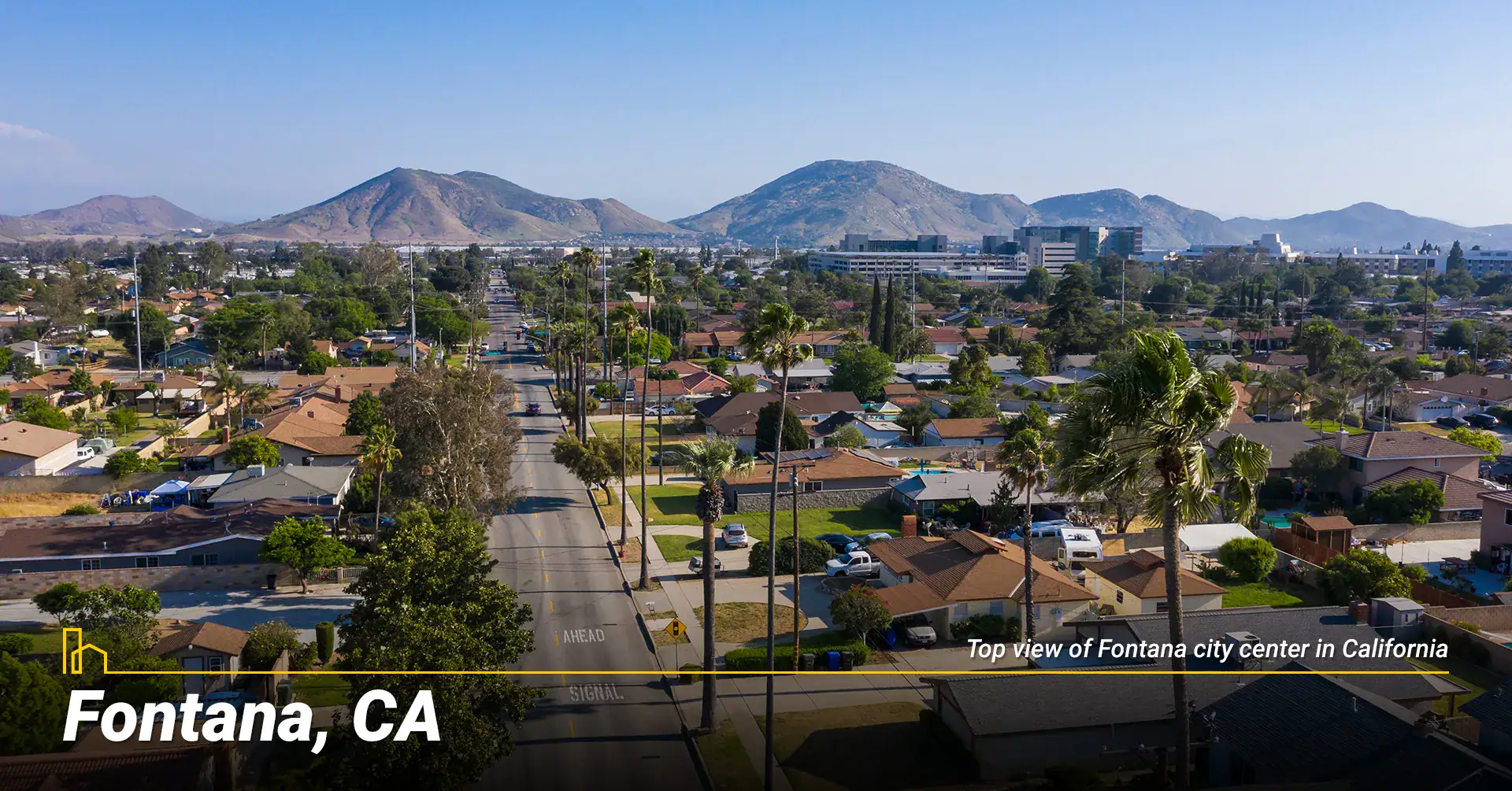
HOMEiA Score: 72/100
- Monthly Rent: $1,741
- Population: ~208,393
- Median Home Price: $665,000
- Cost of Living Index: 116
- Region: Inland Empire
Why It’s Affordable: Fontana’s median home price reflects its growing desirability, but logistics sector jobs pay 12% above Inland Empire averages to help offset costs. The city’s first-time homebuyer program offers up to $50,000 in silent second mortgages, making entry possible for many families. Newer developments include solar panels standard, helping reduce long-term utility expenses.
Pros: The Auto Club Speedway and new cultural center provide unexpected amenities for a city of this size. Outdoor lovers enjoy the 42-mile Pacific Electric Trail connecting to regional parks. Kaiser Permanente’s upcoming medical center (opening 2025) will bring approximately 1,200 healthcare jobs. You’re also well-positioned between Los Angeles and Palm Springs for weekend getaways.
Cons: Constant truck traffic from warehouses impacts air quality and road conditions. Summer temperatures average 97°F with limited tree cover to provide relief. While safer than many neighboring cities, some areas still see property crime spikes. The housing market has heated up dramatically, with prices now $100K above pre-pandemic levels.
An Ultimate Guide to Moving for Home Buyers and Sellers
Buying and selling a home doesn’t make you an expert in moving. Buying and selling are much more different when you’re actually moving. Carefully go through the tips listed below and uses these as your ultimate guide whenever moving…
10. Eureka, CA
HOMEiA Score: 71/100
- Monthly Rent: $1,700
- Population: ~26,512
- Median Home Price: $450,000
- Cost of Living Index: 97
- Region: Northern California Coast
Why It’s Affordable: Eureka’s remote location keeps prices reasonable for a coastal California city. You’ll find Victorian-era fixer-uppers under $400,000 that would cost millions in Southern California beach towns. The Redwood Coast Energy Authority offers 0% interest loans for energy upgrades, helping offset the older homes’ maintenance costs.
Pros: The 2024 Redwood Sky Walk added a stunning ecotourism attraction to the area’s natural beauty. Historic Old Town features over 150 preserved buildings housing art galleries and breweries. The maritime climate keeps temperatures mild year-round, rarely exceeding 65°F. You’re surrounded by redwood forests and rugged coastline that feel worlds away from urban California.
Cons: Limited air service includes one to two daily flights to San Francisco, with additional connections to LAX and Portland. Rainfall exceeds 40 inches annually, with gray skies dominating much of the year. Serious medical issues require trips to UCSF, five hours south. The population has been declining about 1% yearly, impacting local services and retail options. Homelessness remains a visible challenge in the downtown area.
Conclusion
California’s affordability crisis is real, but the dream isn’t dead—you just have to know where to look. Beyond the coastal fixer-uppers with seven-figure price tags lie cities like Stockton, where booming logistics jobs meet Delta waterways, or Chico, where college-town energy and Bidwell Park’s wilderness come with median home prices under $500K. Sure, there are trade-offs—maybe it’s Bakersfield’s heat or Eureka’s rain—but these places offer what high-priced enclaves lost long ago: neighborhoods where teachers, firefighters, and baristas can still buy homes, with enough left over for weekend trips to the places you’ll happily visit, but not pay to live in.
Your California life doesn’t have to be a compromise—just a recalibration. Sacramento’s farm-to-fork culture and riverfront bike trails come with capital-city stability, while Clearlake still has some of the state’s most affordable lakefront homes for those who can work remotely. The key? Ditch the postcard fantasy and embrace California’s scrappier, more grounded soul—where the weather’s “good enough,” the community’s real, and your savings account isn’t just a relic of pre-2020 dreams. The Golden State’s still golden—you just need the right map to find its hidden treasure.
Recommended for you
Frequently Asked Questions About Living in California
1. Is it really cheaper to live in the Central Valley than coastal California?
Absolutely—if you know where to look. Fresno’s $380K median home gets you 3 bedrooms instead of a Bay Area parking space, and Stockton’s 4.25% job growth means paychecks stretch further. But “cheaper” comes with asterisks: prepare for $350/month summer AC bills in Bakersfield (where temps hit 105°F) and EPA-rated “hazardous” air in farming season. The real win? Buying near Amtrak’s San Joaquin line to keep Bay Area jobs while paying half the rent.
2. How do job opportunities compare in these affordable cities?
Forget Silicon Valley. Sacramento’s government and healthcare sectors offer stability (17% of jobs), while Stockton’s port and Amazon hubs need logistics workers at $22+/hour. Remote techies thrive in Chico (CSU’s fiber-optic grid) or Clearlake (USDA broadband grants), but Bakersfield’s 9% unemployment means oilfield jobs rule. Pro tip: Check Fontana’s new Kaiser medical center (1,200 jobs opening 2025) if you’re in healthcare.
3. What are the biggest trade-offs in choosing affordability over amenities?
Your commute, your lungs, or your cultural calendar—pick one. Stockton’s crime rates (1 in 23 victimization risk) come with a revitalized waterfront and Amtrak access. Clearlake’s $220K homes mean wildfire prep and satellite internet. You’ll drive almost everywhere outside Sacramento’s Midtown (82 Walk Score), and you can forget Michelin stars—though Fresno’s $1.50/lb peaches might help. The tradeoff equation? Budget an extra 15% for air purifiers, EV charging, or backup power if you’re going rural.
4. Are utility costs significantly different in inland vs. coastal regions?
Your solar panels will earn overtime. Central Valley summers often bring $400+ cooling bills (especially with PG&E), while Eureka’s coastal dampness can mean running heaters eight months a year. Here’s the hack: Fontana’s new solar-ready homes can cut energy costs by 40%, and Sacramento’s Municipal Utility District (SMUD) offers rebates that coastal utilities don’t. Just beware of Clearlake’s tiered PG&E rates—lakeside charm can come with $600/month power bills.
5. Can retirees find affordable and enjoyable places in California?
Eureka’s $450K Victorians suit bookish types—just pack a raincoat. Active retirees flock to Clovis for flat bike trails and top-rated Medicare providers. California doesn’t tax Social Security income, helping stretch retirement dollars. But research carefully: Chico’s ER wait times can exceed four hours, and Clearlake’s nearest specialists may be 45+ minutes away in Ukiah. Wildfire insurance can add $2,000+ per year inland, though some senior villages around Sacramento include on-site clinics and health services.
6. How much money do you need to live comfortably in California?
In the suburbs of major cities, you’ll need at least $60,000 as a single adult or $120,000 as a couple to be comfortable. In the downtown areas, the cost of comfort can be higher, around $75,000 for a single adult or $150,000 for a couple.
However, comfort levels vary significantly by location. Coastal cities require higher incomes, while inland areas offer more affordable living options. Consider your lifestyle preferences, career goals, and family size when budgeting for California living.
7. Is California really as expensive as everyone says?
Yes, California is currently the third most expensive state in the U.S., after Hawaii and Massachusetts. The high cost stems from housing shortages, desirable locations, and elevated tax rates. However, higher salaries in many industries help offset some expenses, and strategic location choices can significantly reduce costs.
15 Things People Usually Forget When Moving
Whether or not you decide to hire a professional moving company, this guide includes everything you need for completing your move. It’s always best to have this list handy so you can check off each task and know that you’re on top of everything…
8. How bad is California traffic really?
Traffic in major cities like Los Angeles and San Francisco can be awful, especially during rush hour, with commutes commonly taking an hour or more. However, public transit options are expanding, and many employers offer flexible schedules or remote work to help employees avoid peak traffic hours.
9. What should I know about California taxes before moving?
California has some of the highest taxes in the nation, with income tax rates up to 13.3%, sales tax reaching 11.25% in some areas, and elevated property taxes due to high home values. These taxes fund extensive public services but significantly impact household budgets and should be factored into your moving decision.
10. Do you need a car to live in California?
This depends entirely on your location. In cities like San Francisco, public transit options like BART, Muni Metro, and buses can help you avoid driving. San Diego’s MTS infrastructure is also improving, with newly extended county-wide trolley lines, helping ease the strain of major highways. Expanded train lines from Los Angeles to the Inland Empire have also helped improve daily commutes for thousands of workers.
However, most California areas are car-dependent. Most rural and suburban regions, where housing costs are lower, require personal transportation for daily activities, work commutes, and accessing services.
11. Is California safe to live in?
In general, California is a safe place to live, though like any large state, there are areas you shouldn’t be alone in at night. Safety varies significantly by neighborhood and city, but many of the safest neighborhoods are located in Orange County and northern San Diego County, away from the densely populated downtowns of major metropolitan centers.
When considering a move to California, research specific areas thoroughly, and be aware of natural disaster risks including earthquakes, wildfires, and occasional flooding.
12. What are the natural disaster risks in California?
California faces several natural hazards including earthquakes, wildfires, droughts, and mudslides. Wildfire season can run from June through November, and residents should prepare for potential evacuations and air quality issues. Earthquake preparedness and appropriate insurance coverage are essential for all residents.
13. How do California salaries compare to other states?
California’s median household income of $91,500 significantly exceeds the national average of $75,000. Tech, biotech, healthcare, and entertainment industries offer particularly competitive salaries. However, higher salaries don’t necessarily “match” the increased cost of living, so careful budgeting remains essential.
14. What’s the best time of year to move to California?
California’s mild climate makes moving possible year-round, but consider avoiding peak wildfire season (late summer/early fall) and holiday periods when housing inventory is lower. Spring and early summer often offer the best selection of rental properties and more favorable moving conditions.
15. Can you really go to the beach and ski in the same day?
Simply put: yes! In fact, hundred of teens in Los Angeles participated in a challenge that cemented this fact not long ago. They would start the day at the beach, drive to Big Bear to ski, and then end in Joshua Tree desert. California’s diverse geography makes it possible to experience beaches, mountains, deserts, and forests within hours of each other, offering unmatched recreational variety.
27 Questions to Ask When Hiring a Moving Company
Hiring a moving company can be pretty daunting. You’re entrusting strangers with all your precious belongings, and you want to make sure they’re adequately insured, experienced, and licensed. In this blog post, we’ll cover some essential questions to ask when hiring a moving company and help you avoid moving mishaps…
Bonus: The State of California
The State of California is rich in history, natural beauty, high-tech influence and agricultural excellence. Located along the Pacific coast, this extensive area was once a part of the Spanish and Mexican Empires. Earning statehood in 1850, it is now the most populous state in the U.S.
During the gold rush days of the mid-1800s, California enticed wagonloads of adventurers to head west to seek their fortune and hopefully strike it rich, and some mining continues today. The state is now an agricultural wonderland, supplying the country with a large percentage of vegetables and fruits, as well as livestock, dairy and nuts. The wine country is centered around the northern Bay area, famous for its grapes and local wines, notably Cabernet and Zinfandel, wine tours, fine cuisine and gorgeous scenery.
California’s Largest City
As the state’s largest city, Los Angeles is the entertainment capital with its Hollywood movie industry, producers, actors and recreational destinations. To its south along the Mexican border, San Diego is a year-round playground with beautiful weather, the world-famous San Diego Zoo and prominent U.S. Naval Fleet Operations. Further north, San Francisco is well known for its Bay Area, Golden Gate Bridge, hilly streets, cable cars and Alcatraz Island, while the neighboring San Jose has become a global technology center known for its innovation and prosperity.
Hot-spot destinations in California are the Yosemite National Park with its breath-taking landscape and waterfalls, the family-friendly Disneyland Park with amusement for all ages, and the age-old redwoods in the national and state parks. Families find the weather and natural settings in California charming, and since it is such an expansive state with 840 miles of coastline, there is an appeal for everyone. From urban to rural and beaches to mountains, families can find the business opportunities and housing options that are right for their chosen lifestyle.
10 Important Things You Should Prepare for Long-Distance Moving
Moving long distances can be exciting, like an adventure of a lifetime. There is nothing as interesting and energizing as trying out new things and having the opportunity for a fresh start. But let’s be honest: moving is more complex than getting into a car or a bus and leaving for a new place…
California’s Benefits
With unlimited possibilities for personal and professional growth and contentment, you’ll find advantages worth exploring. If you are considering a move to California, you have many regions to choose from and many careers to pursue. Housing is available in countless styles and locales.
Overall: Making California living work for You
California’s job market, recreational offerings, and quality of life drew 34 million new residents between 1950 and 2000. These numbers have dwindled considerably since the turn of the century. The state’s slowing growth in recent decades is a reminder of the high barrier to entry to major coastal cities. But, as you’ve seen, there are several ways to strike a happy medium in the Golden State.
It’s true: living in California requires strategic financial planning—but the prep-work can pay off. While the cost of housing, taxes, and everyday necessities often surpass the national average, especially in coastal and metropolitan regions, thousands are still drawn to the Golden State each year by its rare combination of advantages.
Career opportunities in tech and biotech innovation hubs like Silicon Valley and San Diego could sustain a unique lifestyle in a premium neighborhood. Opting for a mid-range living situation can give you reasonable access to culture-steeped neighborhoods like San Francisco’s Mission District and Los Angeles’ Koreatown.
And almost anywhere you settle gives you access to some of the most beautiful places in America, from the terpene wilderness of Humboldt County’s redwood forests to the beaches of Santa Barbara and the granite cliffs of Yosemite National Park.
At HOMEiA, we’ve reviewed local real estate agents to help you find an agent who knows the regions, residential housing, commercial properties, market values and trends. If California is at the top of your list, check out HOMEiA’s list of preferred agents who have the credentials, reviews and customer focus to make your transaction a smooth one.
Local Editor(s)
10 Cheapest Places to Live in California
California, known as the Golden State, is as famous for its natural beauty and geographic diversity as it is for making people’s Hollywood dreams come true. What many house hunters…
12 Key Factors to Know About Living in Los Angeles
If living in Los Angeles (or LA) is your reason for considering relocating to California, you will find a lot to love in this sunny, warm, sprawling, diverse city. In…
9 Exciting Things to Do in Modesto, California
Nestled in the heart of California's Central Valley, Modesto is a city that offers endless opportunities for outdoor adventure. With its mild climate, vast parks, and diverse landscape, Modesto is…
22 Top-Rated Things to Do in Palo Alto, California
While San Francisco is the first city people think of whenever California's Bay Area is mentioned, several other cities make sizable contributions to the region. One of these is Palo…
The 10 Best Places to Live in San Diego, California (2025)
San Diego boasts a variety of vibrant neighborhoods, each offering unique charms and amenities. From the beachside bliss of La Jolla to the bustling urban vibe of Downtown, there's something…
8 Key Steps to Buy a Manufactured Home in California
If you’re among the growing number of people looking to buy a mobile home in California, there are a few steps to take: Talk to owners of mobile homes, consider…
The Ultimate Guide to Renting an Apartment in Koreatown of LA, California
Welcome to Koreatown, Los Angeles - a vibrant, culturally rich neighborhood that offers an unparalleled living experience. Nestled in the heart of LA, Koreatown is a melting pot of diverse…
The Process of Furnace installations in the San Jose, California
A furnace is an essential utility system used for heating homes and businesses. Depending on where you might be located throughout the United States, there are different things to keep…
The Ultimate Guide to Renting an Apartment in Koreatown of LA, California
Welcome to Koreatown, Los Angeles - a vibrant, culturally rich neighborhood that offers an unparalleled living experience. Nestled in the heart of LA, Koreatown is a melting pot of diverse cultures, cuisines, and architectural styles. If you're considering making this…
9 Exciting Things to Do in Modesto, California
Nestled in the heart of California's Central Valley, Modesto is a city that offers endless opportunities for outdoor adventure. With its mild climate, vast parks, and diverse landscape, Modesto is a playground for outdoor enthusiasts of all ages and skill…
30 Best Packing Tips for Moving to a New City
The mission is simple: move everything you own from your current home to your new one. The actual process? Long, stressful and headache-inducing. The pressure is multiplied when you’re moving to a whole new city. How do you get everything…


 Considering
Considering




